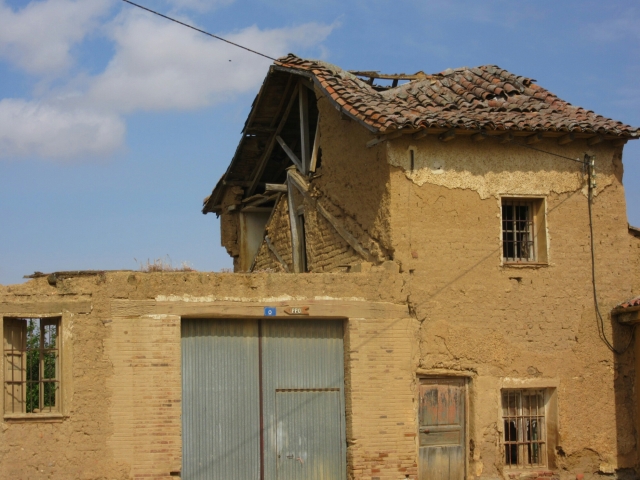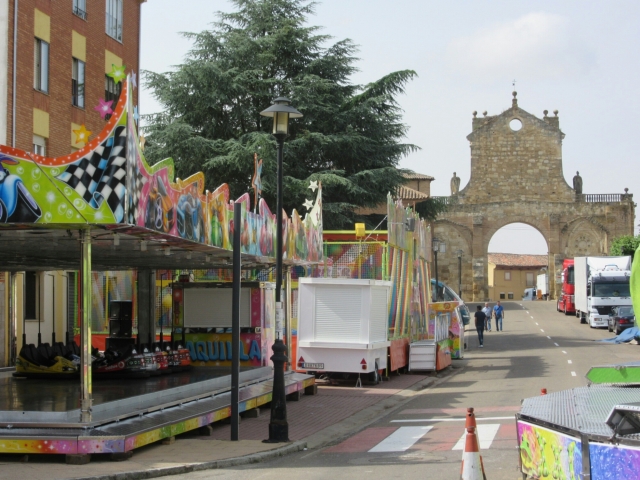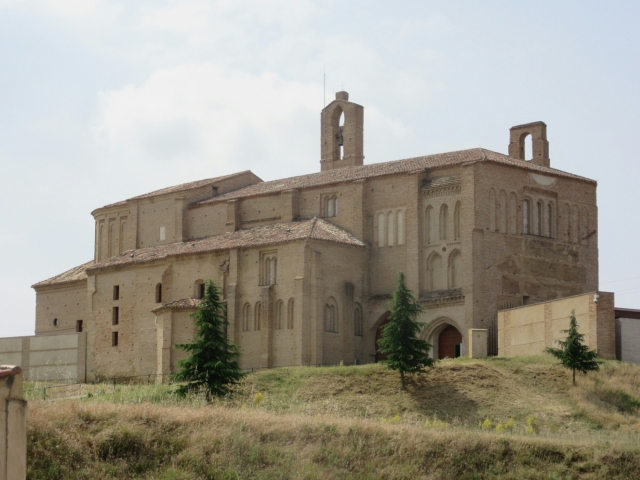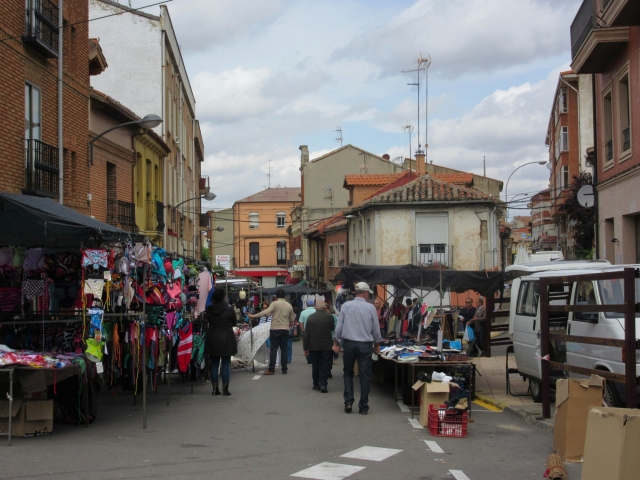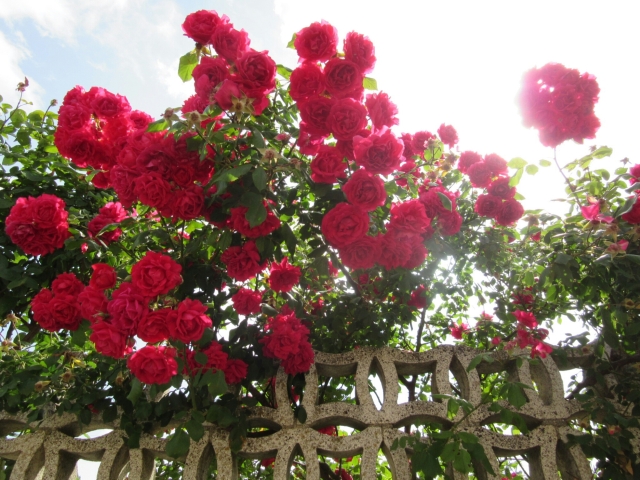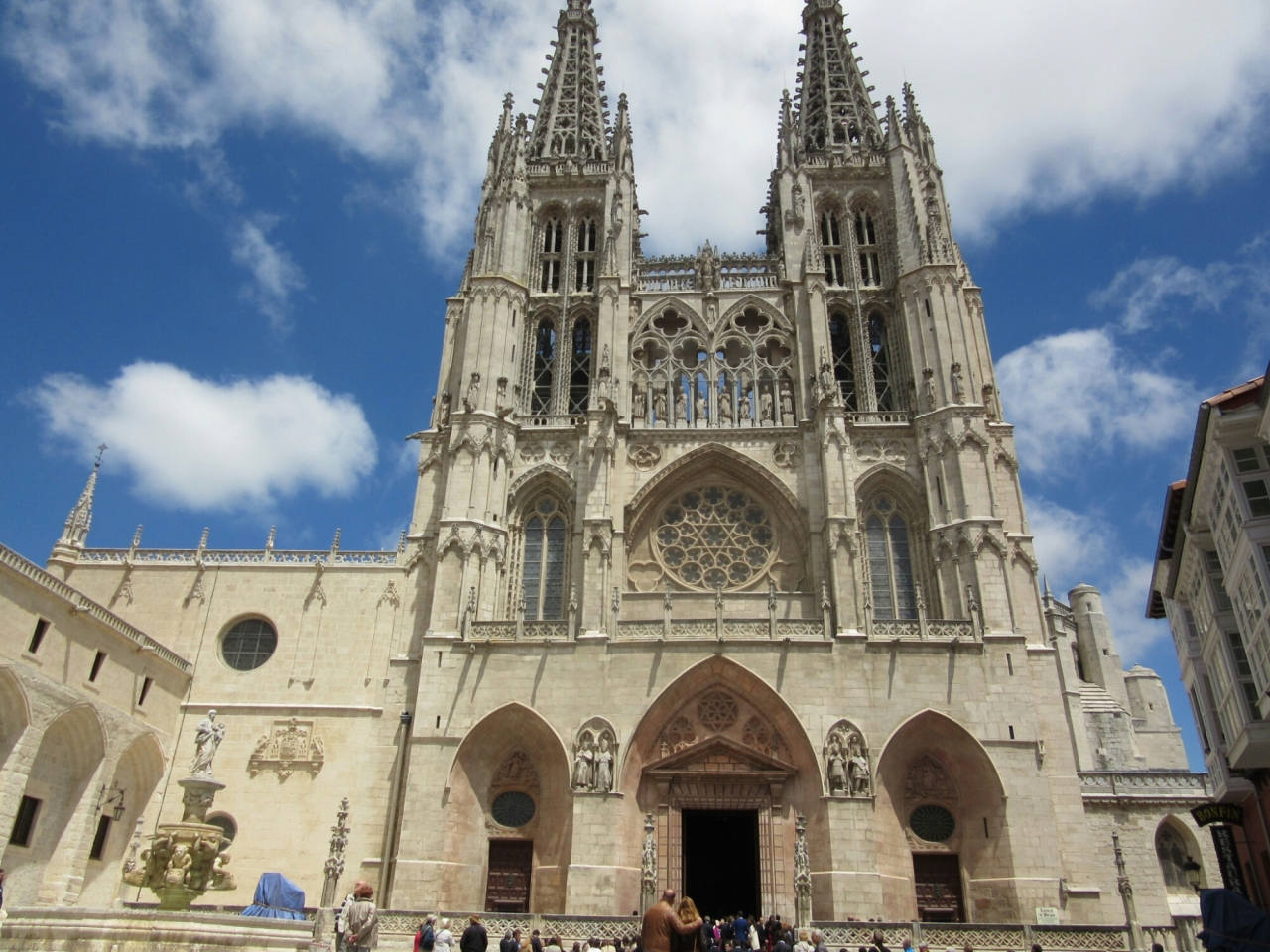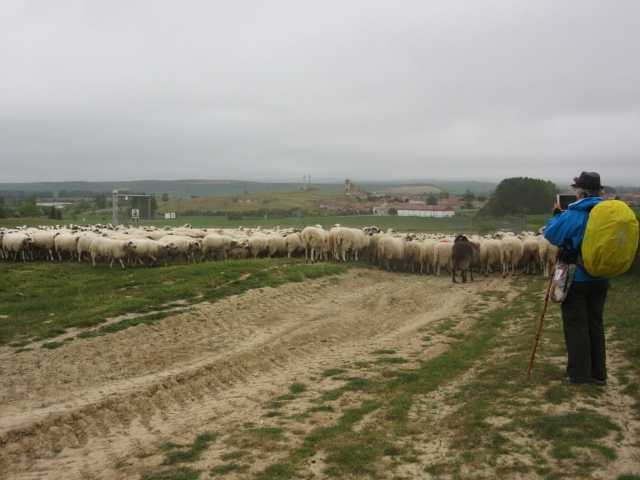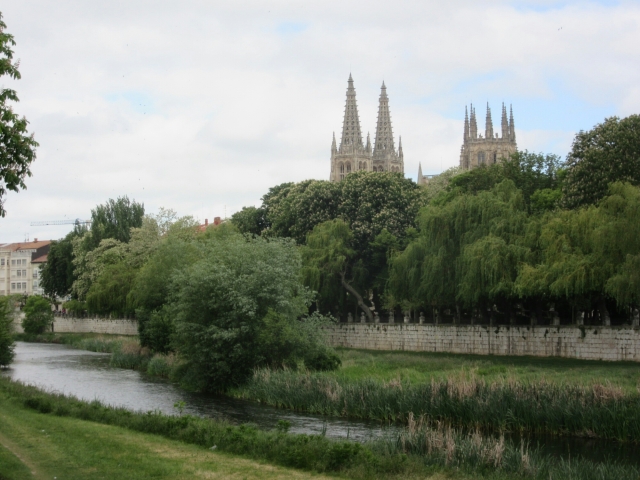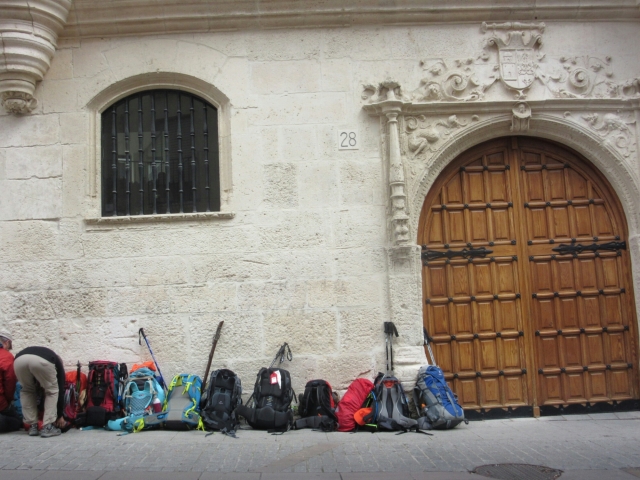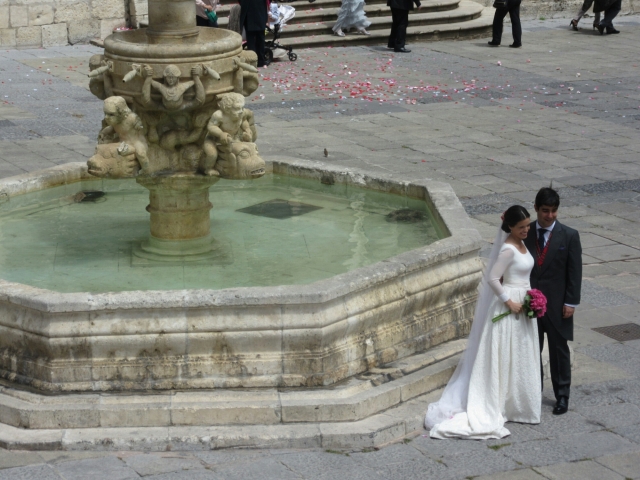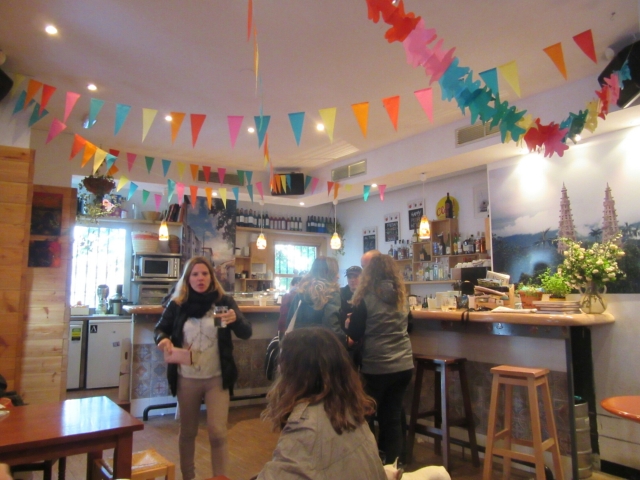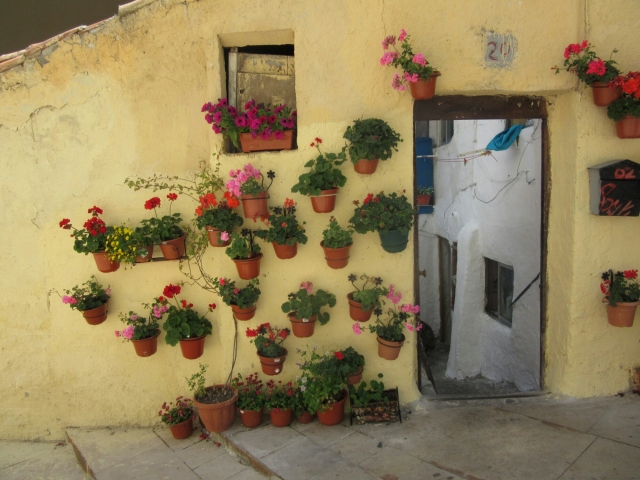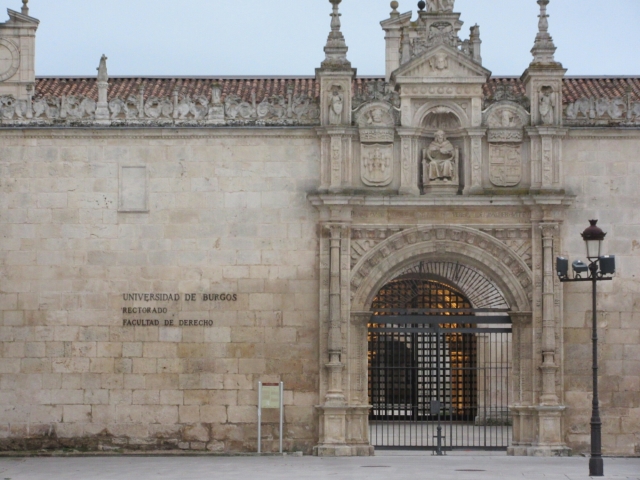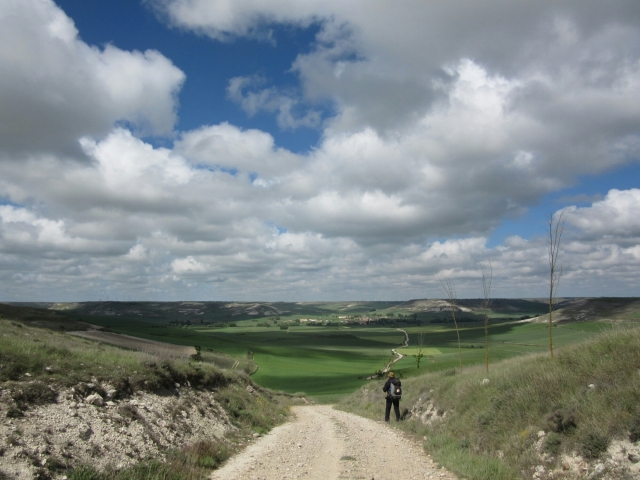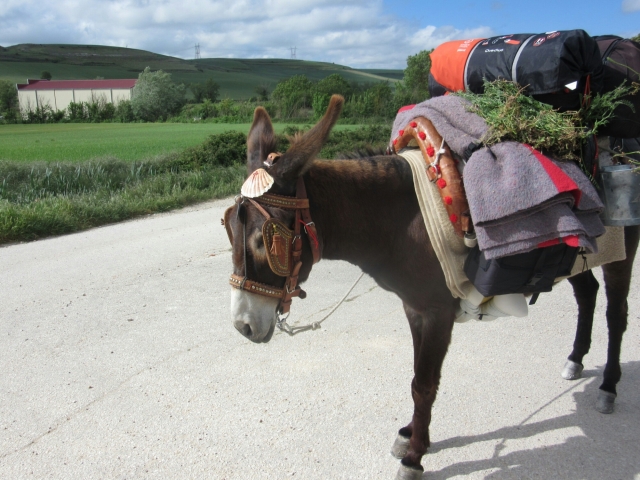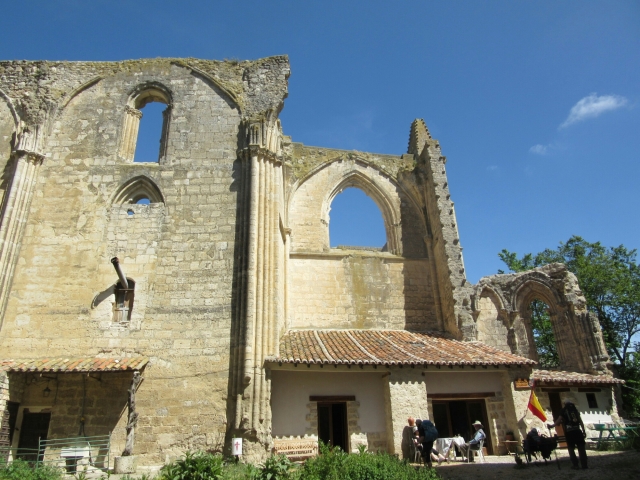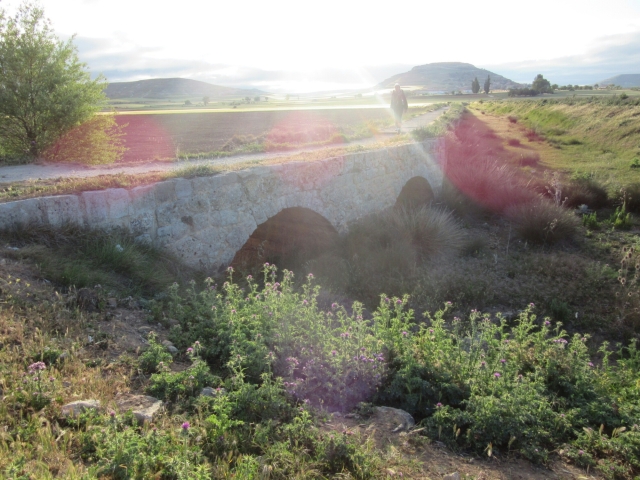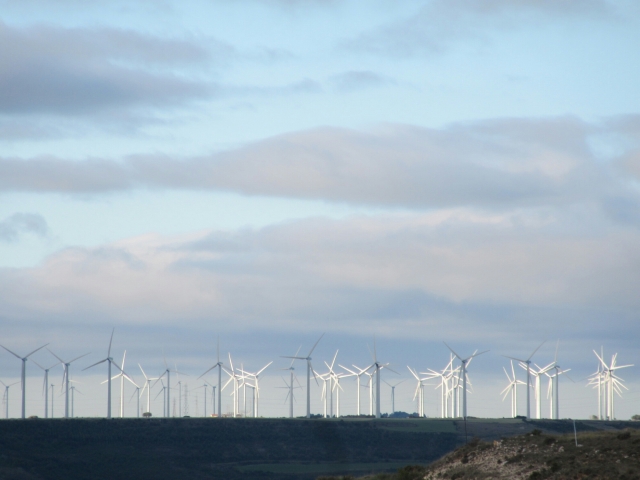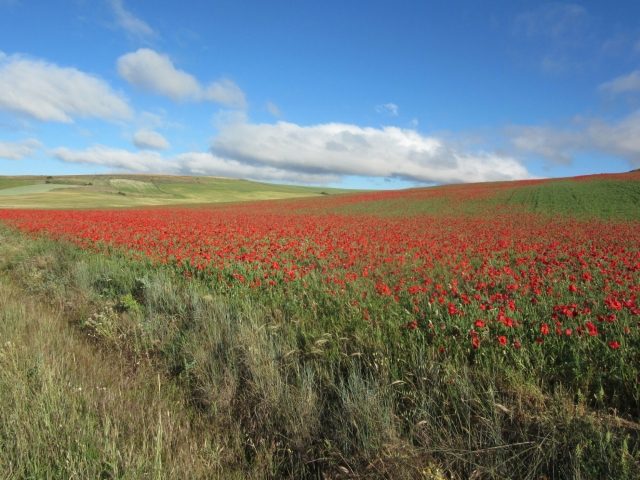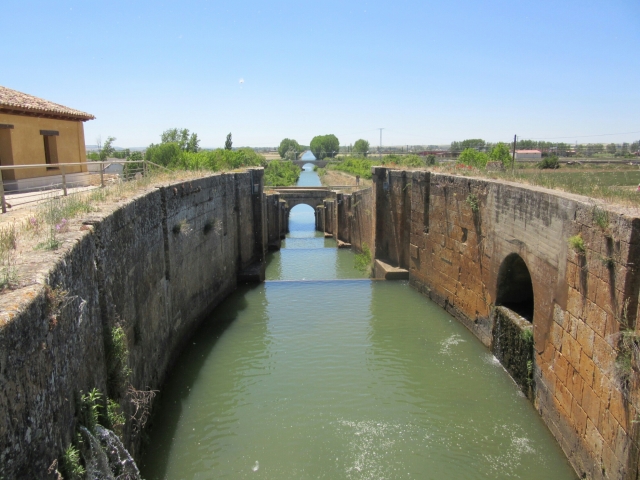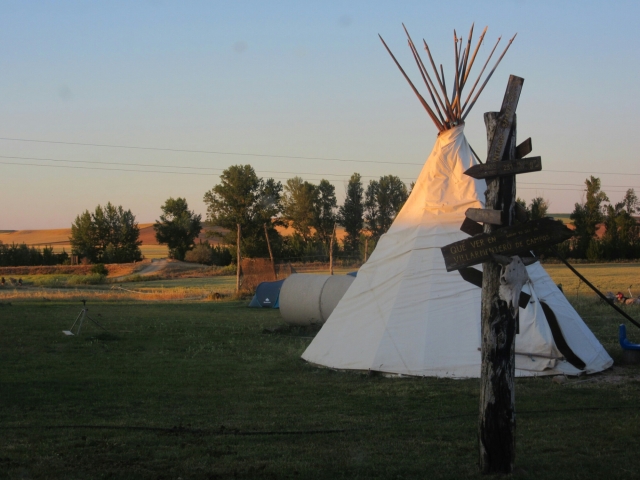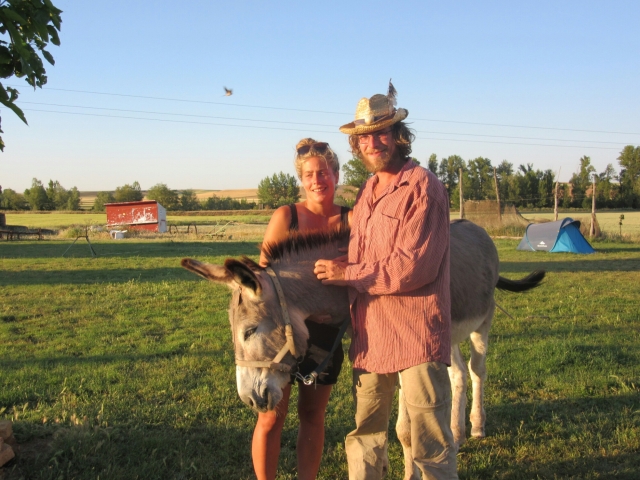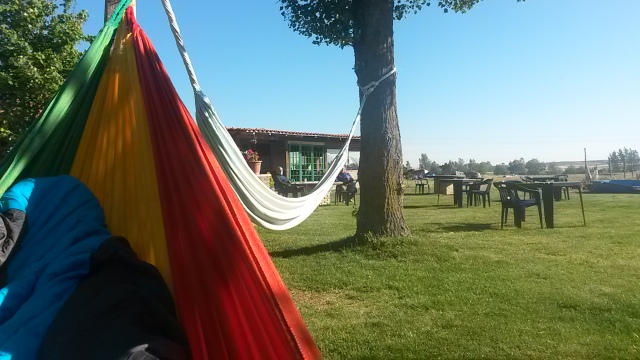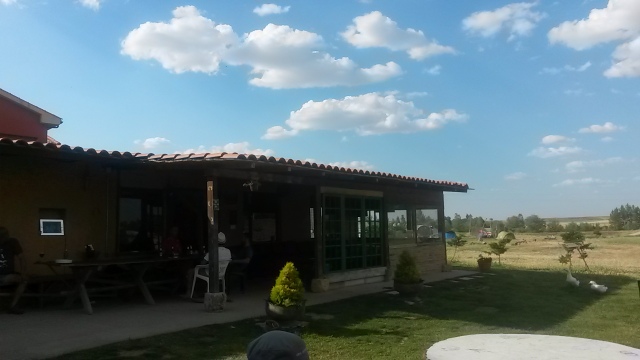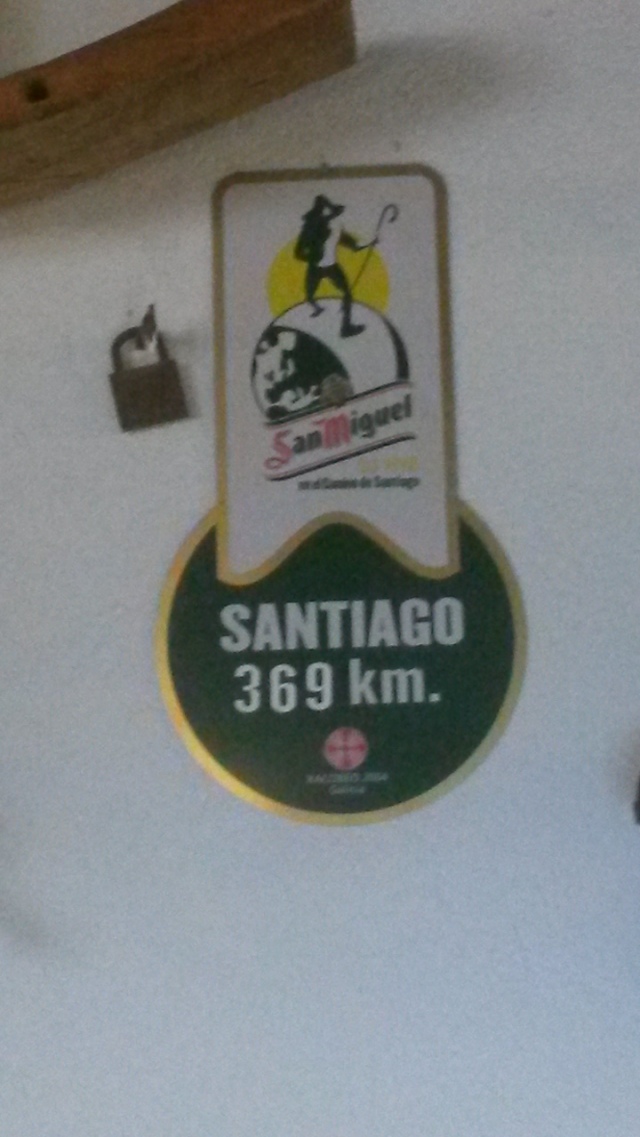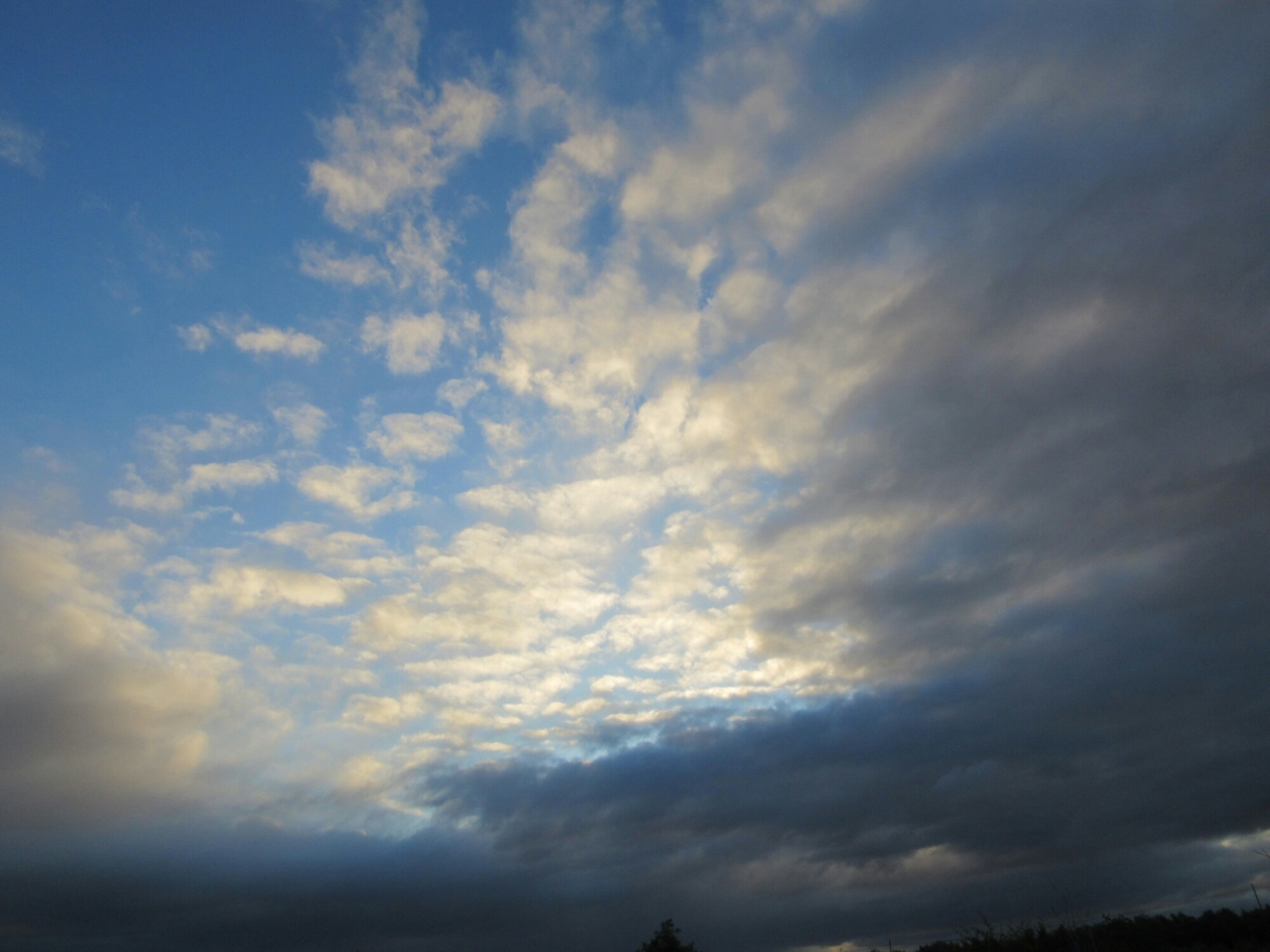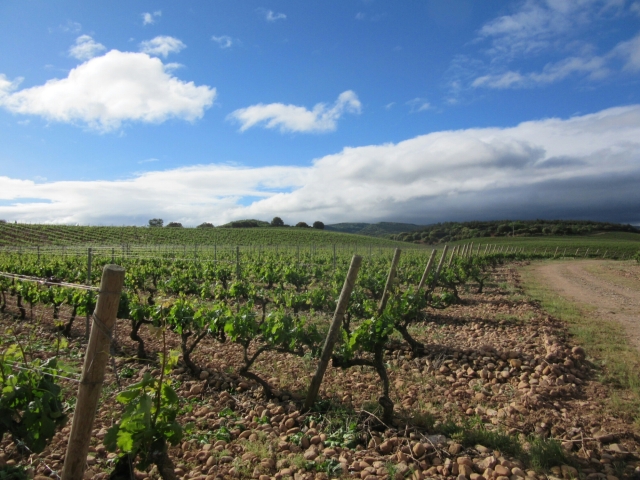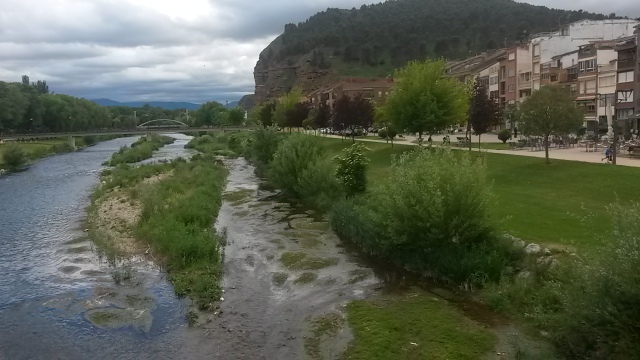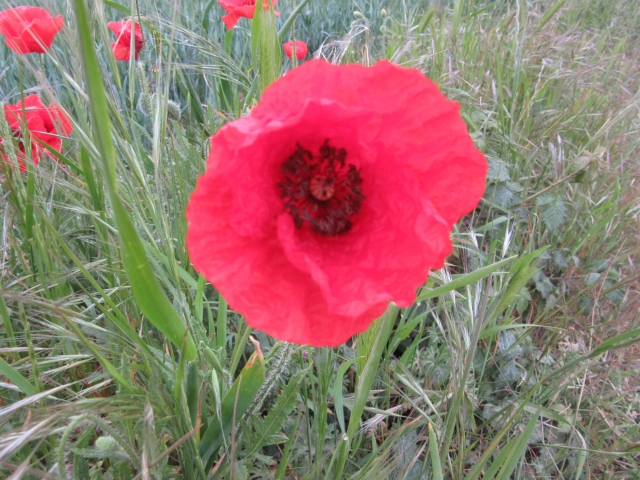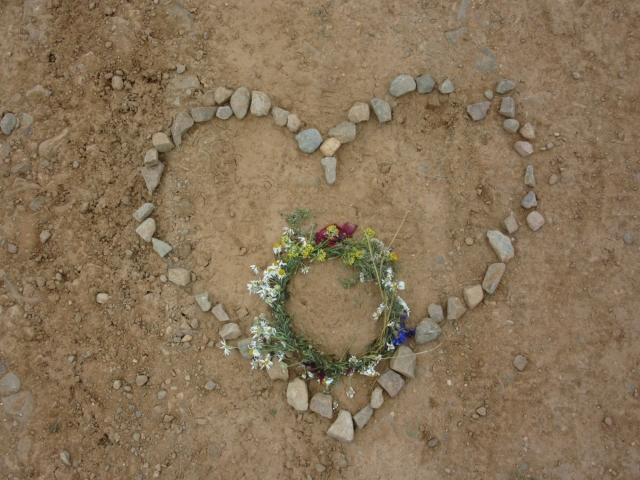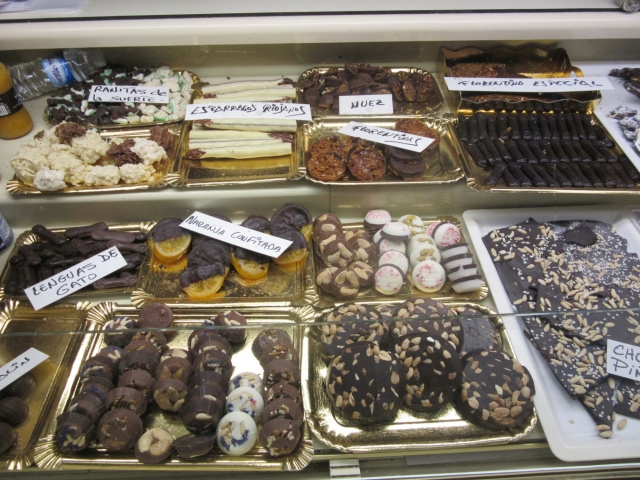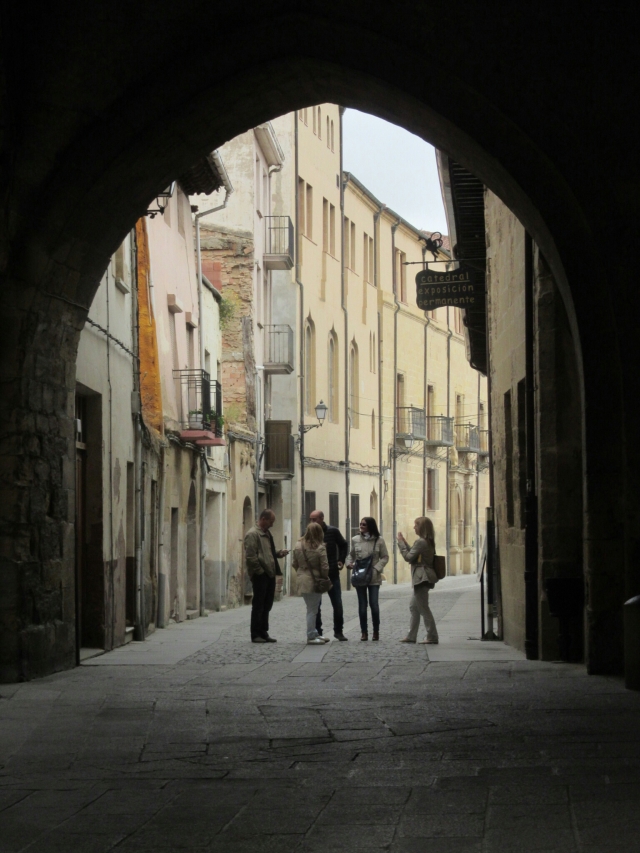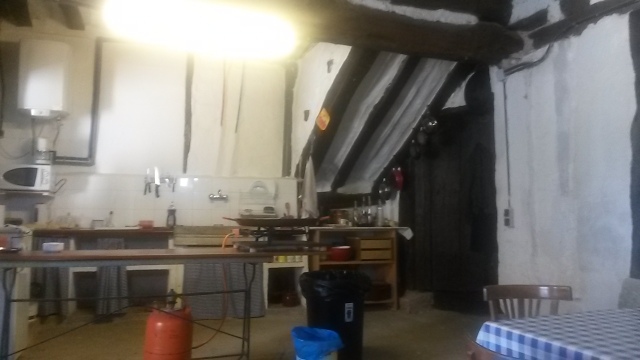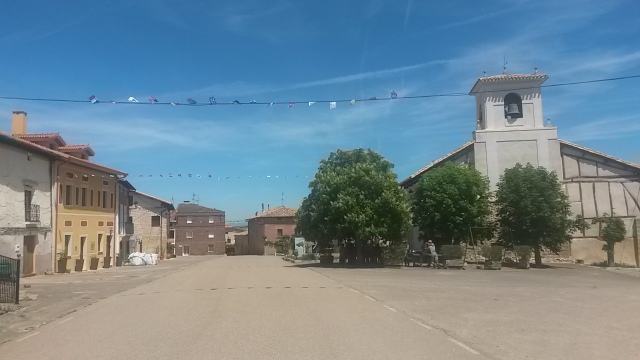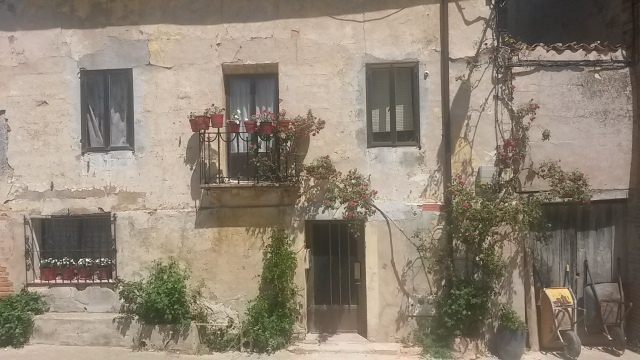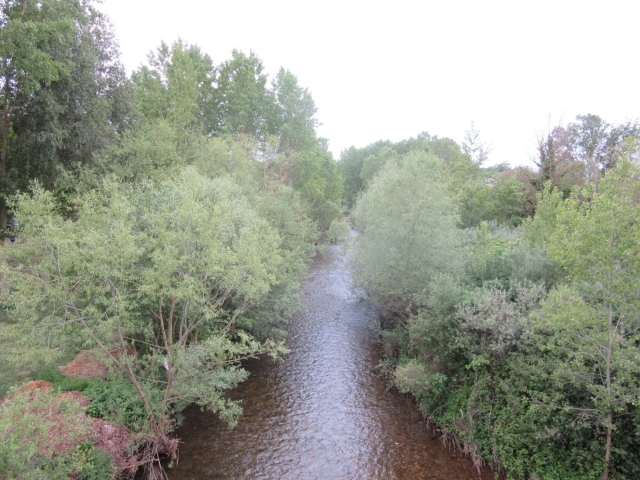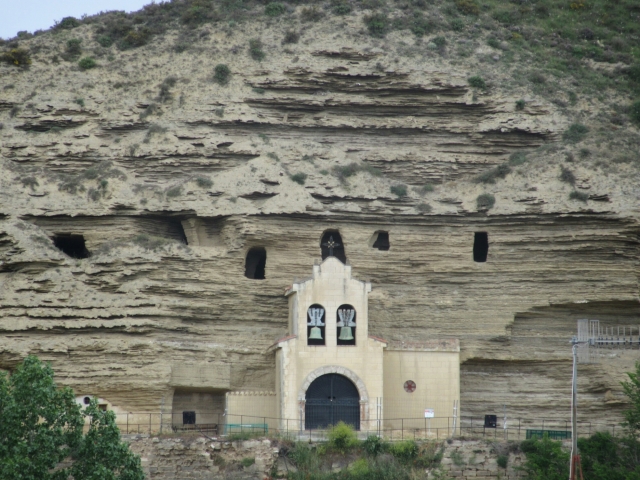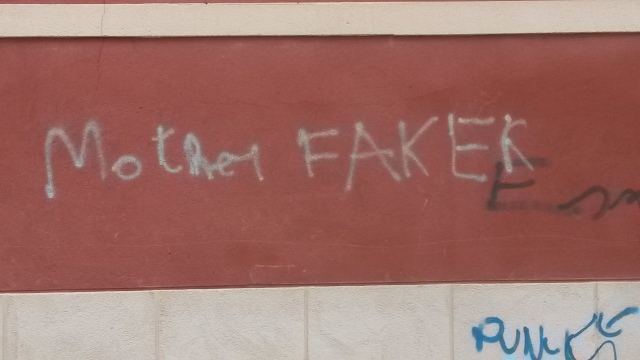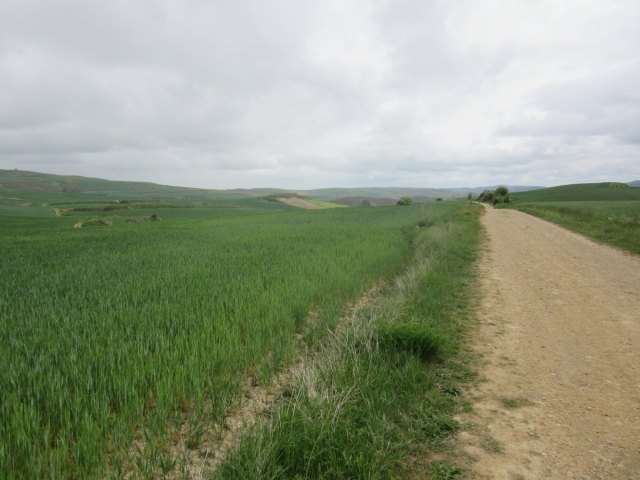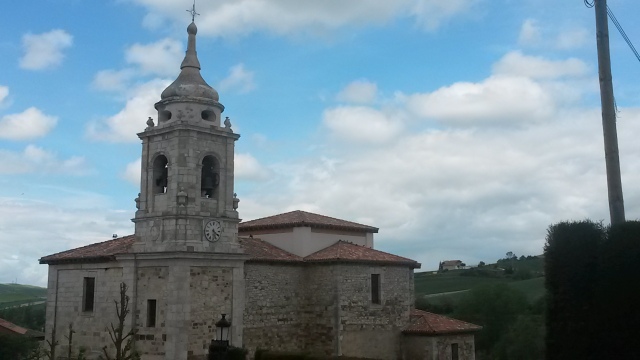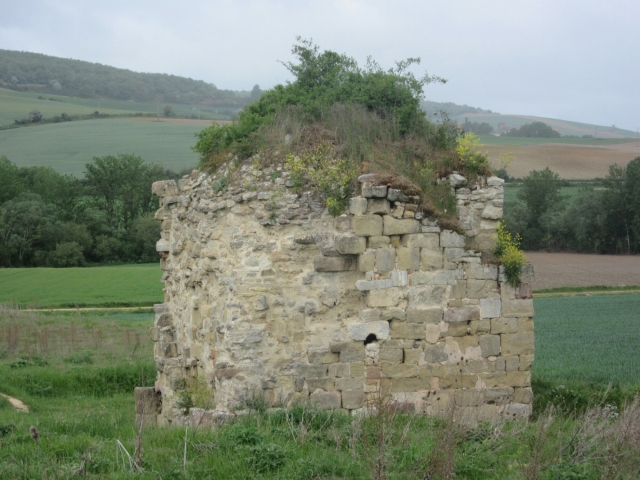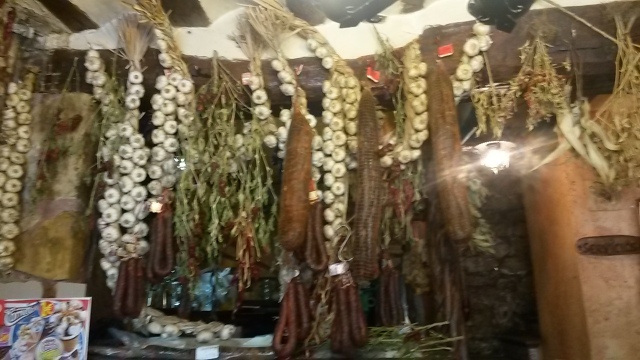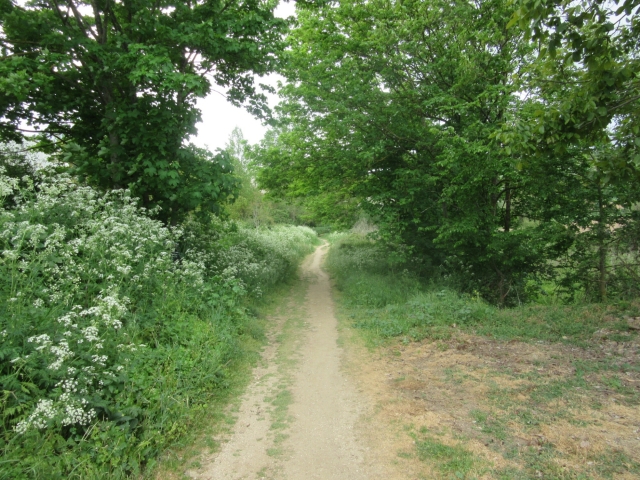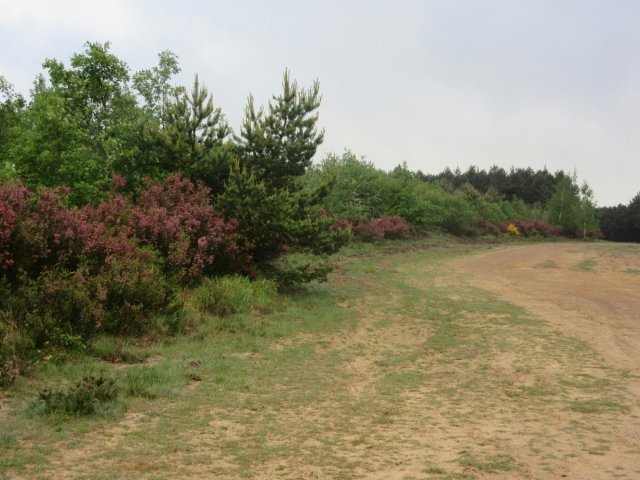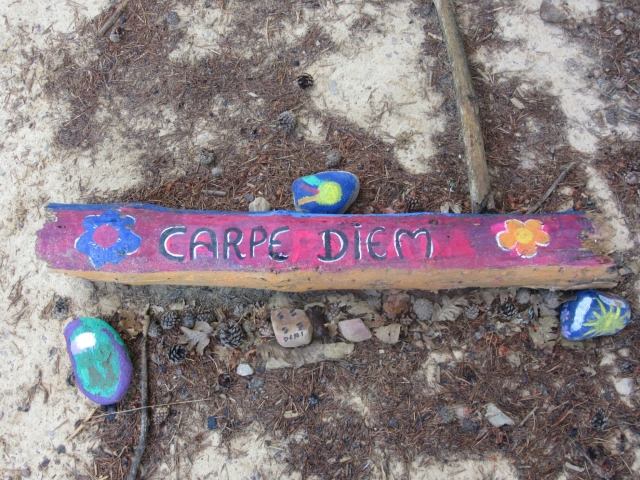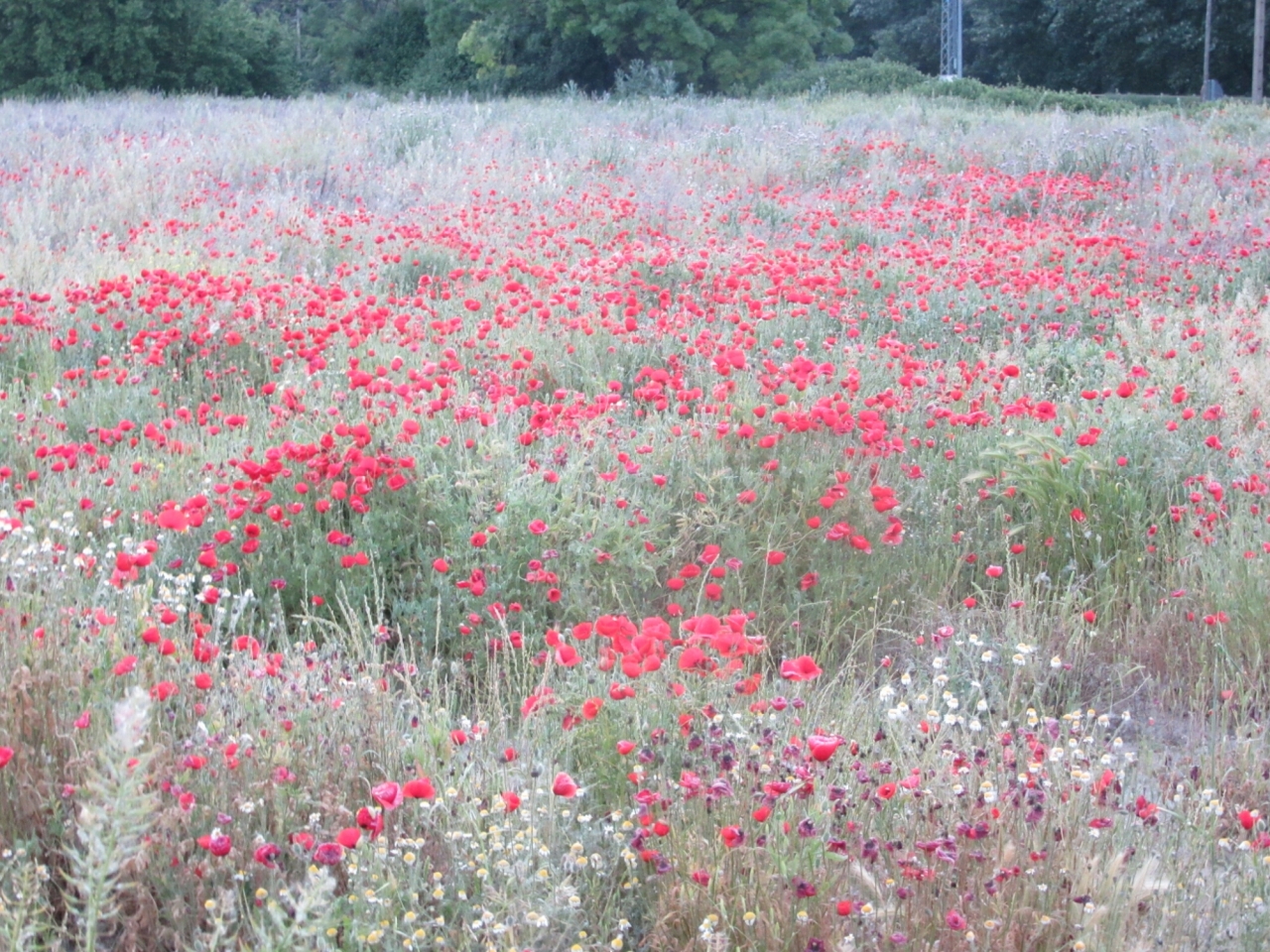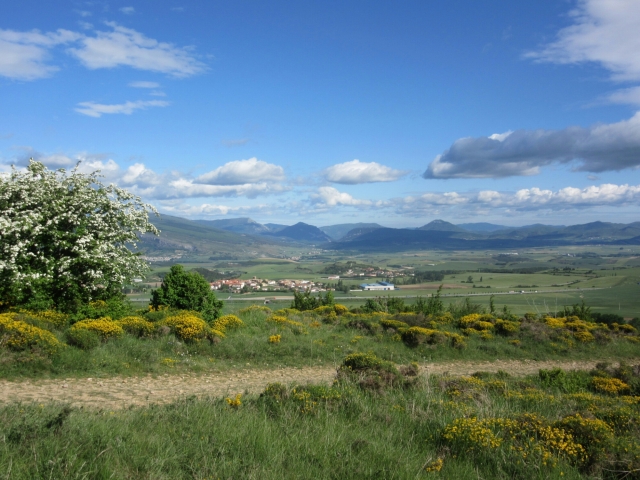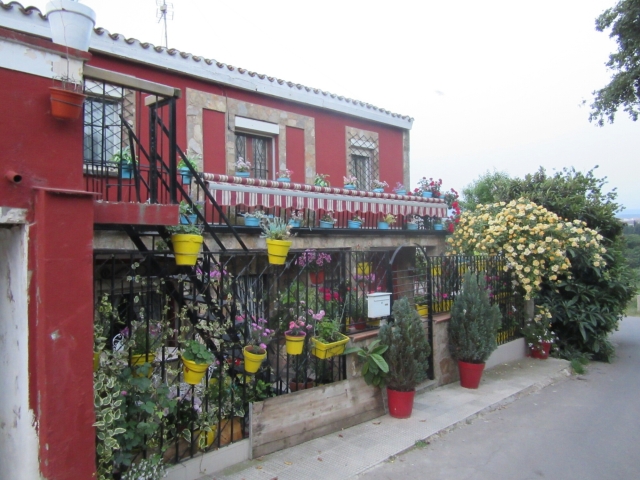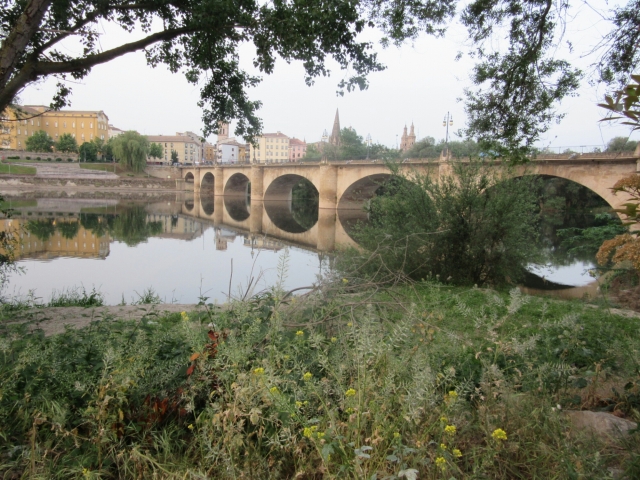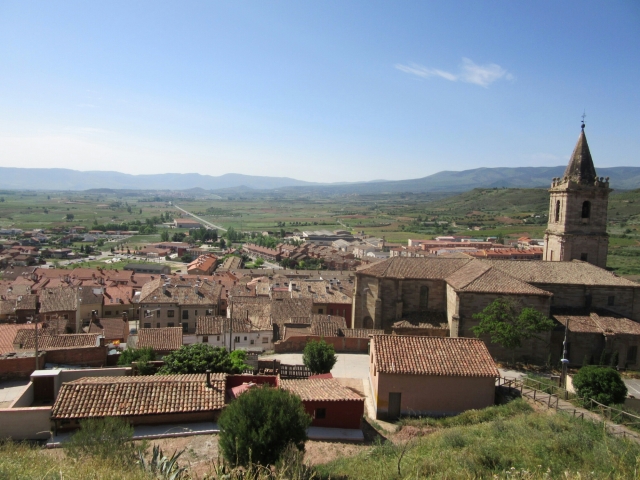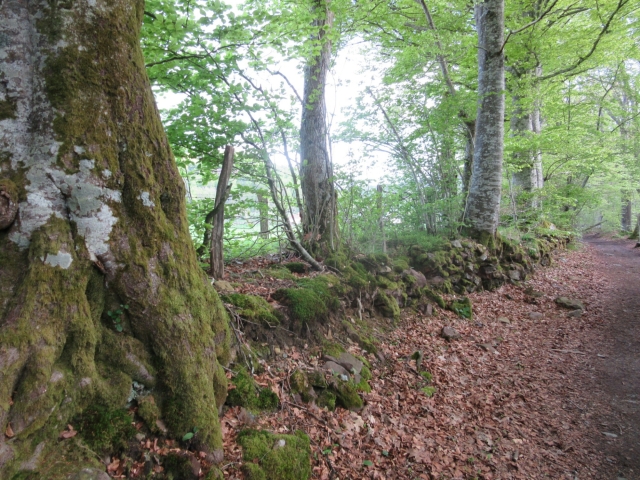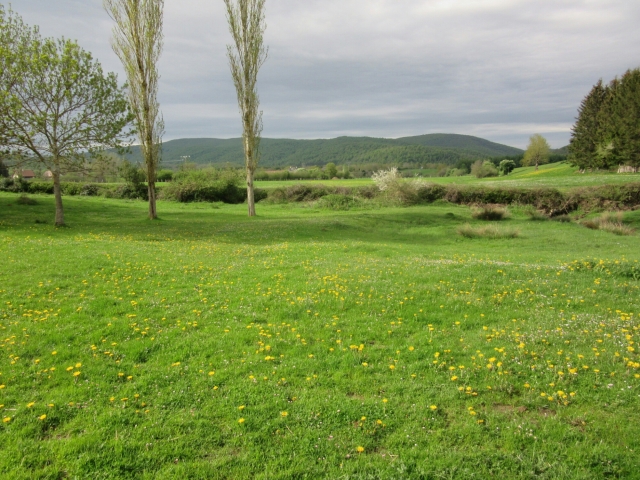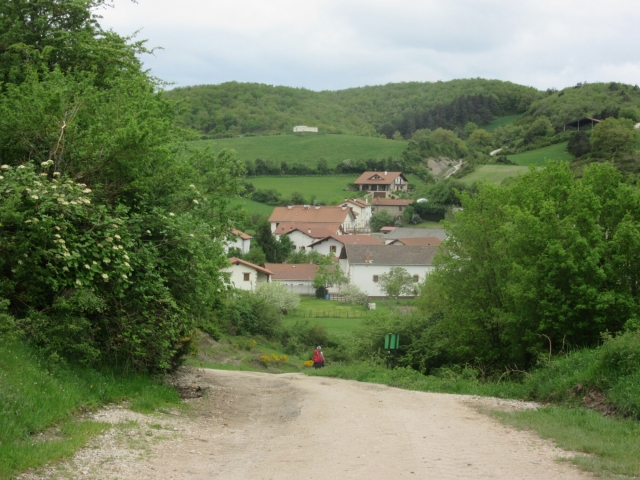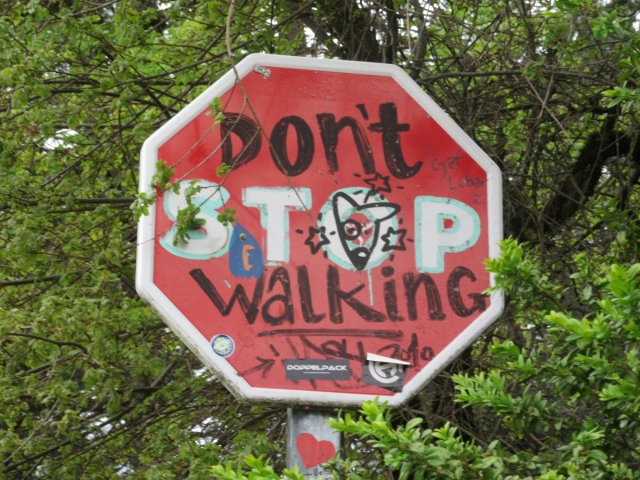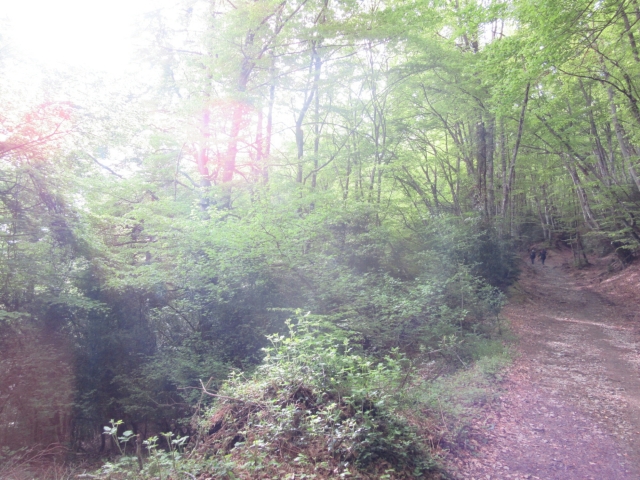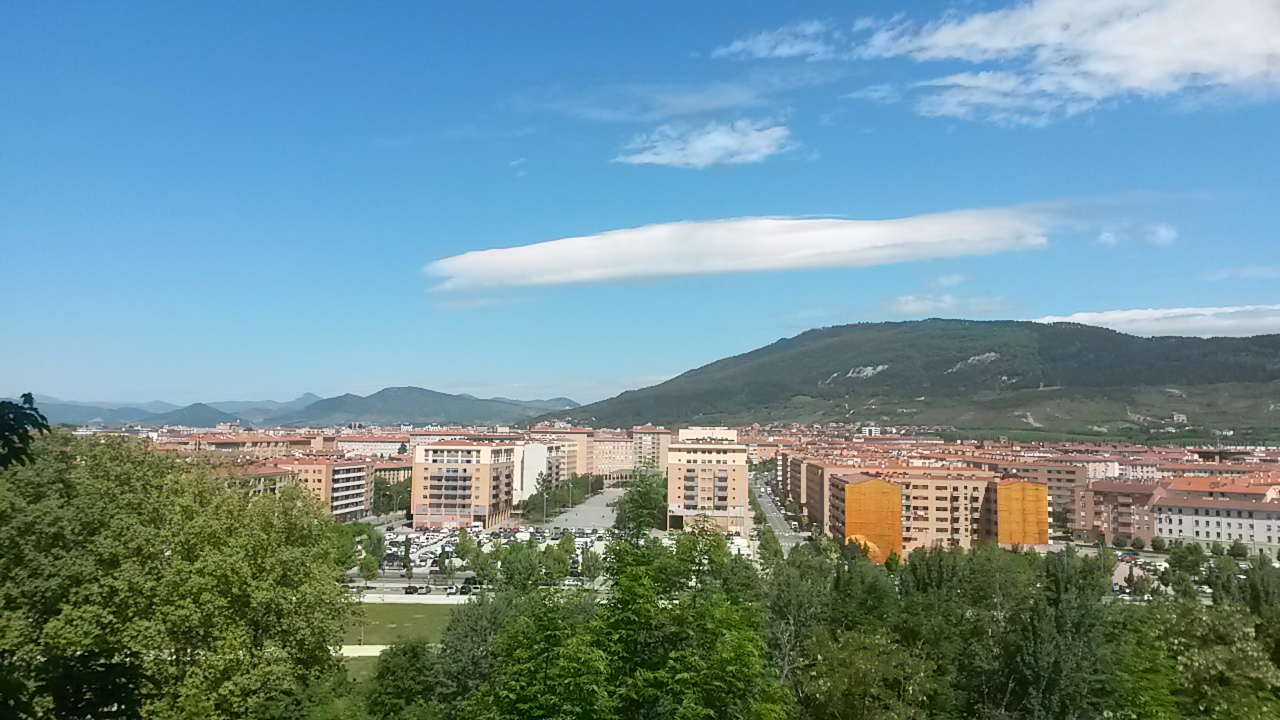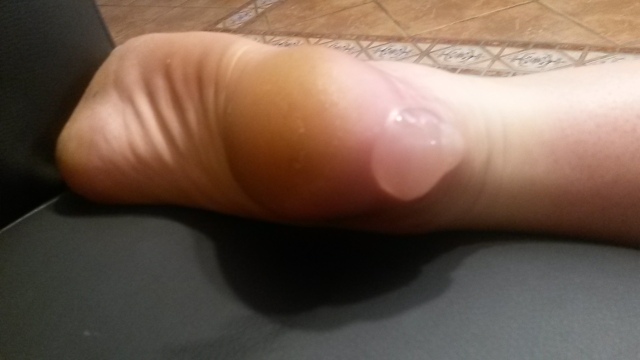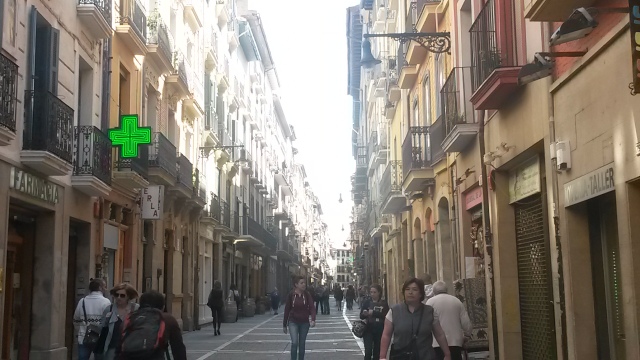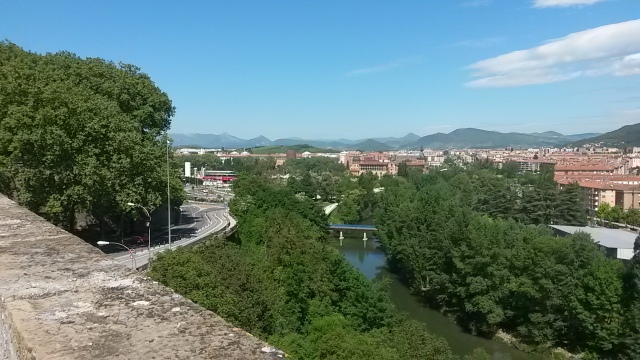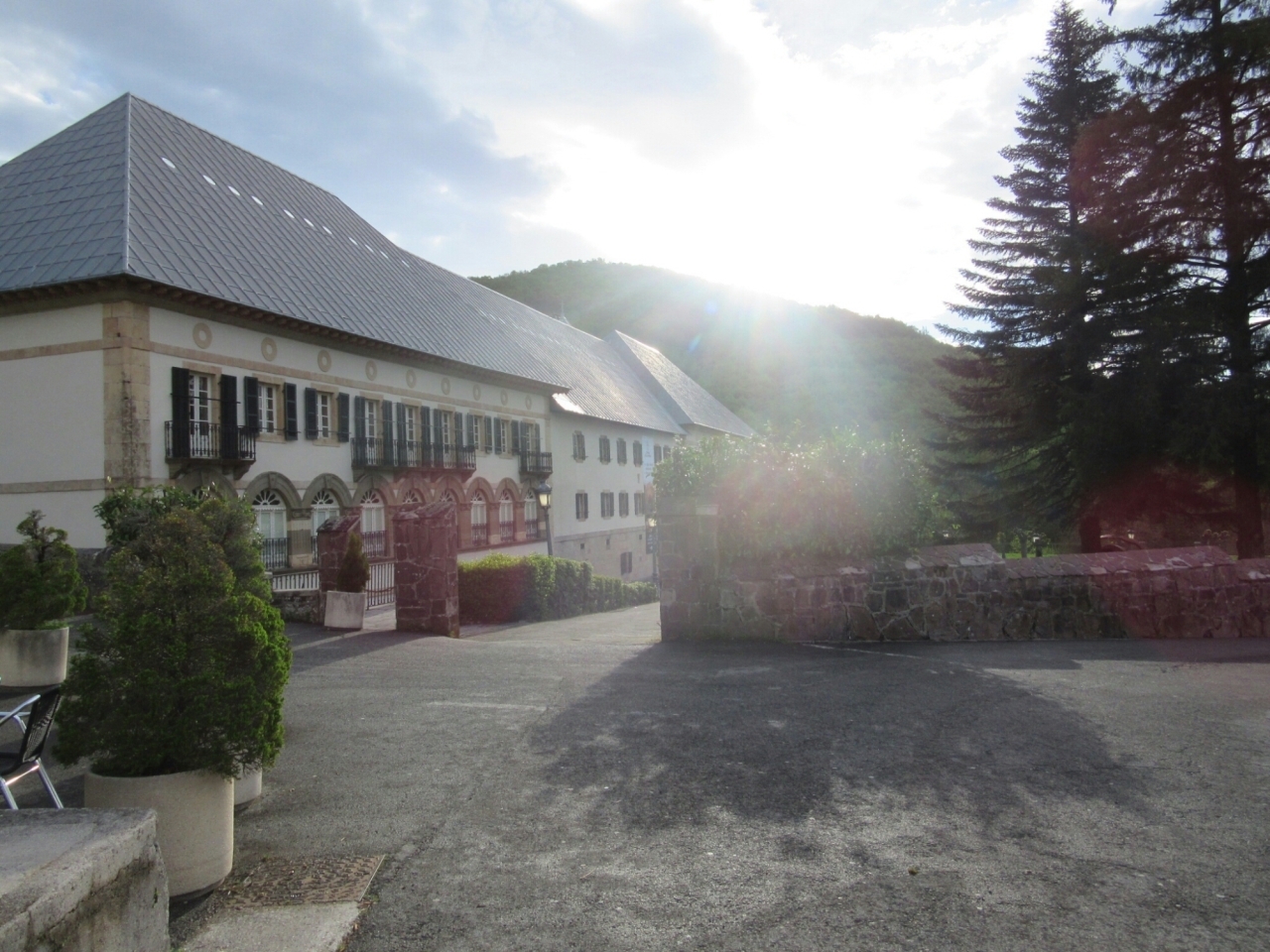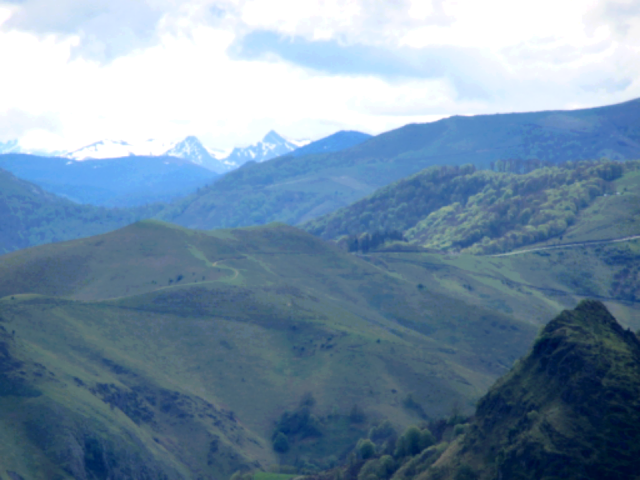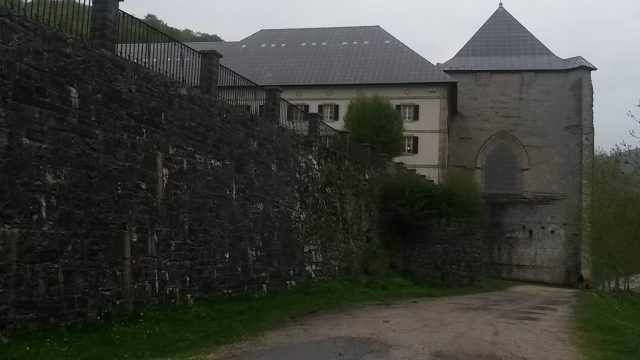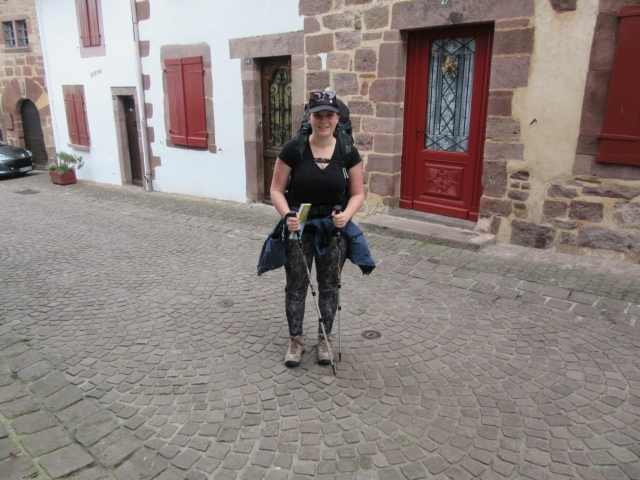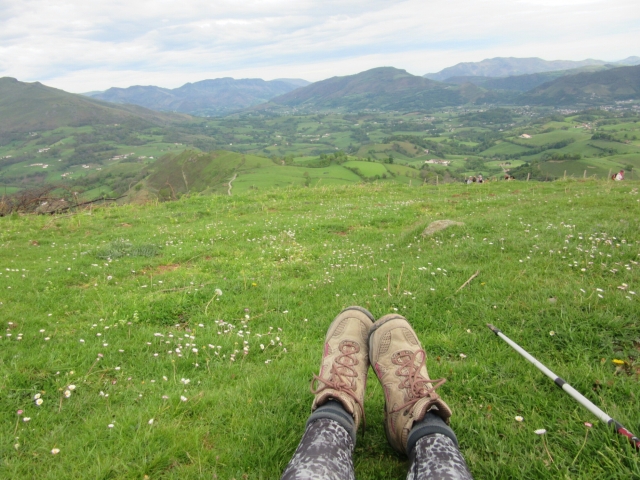After leaving San Nicolas, I only made it 7km into Sahagun before my feet gave out. I decided to stay the night so I could think about what to do – whether I should persist with the blisters and tendonitis or take a break again.
My Camino guide stated that Sahagun has a population of 170 000. In a twist of events, someone put a few too many zeroes on and the population was actually closer to 1 700. I really loved it though – it was a bit too grimy and industrial to be called pretty, but was actually a nice change after so many perfect, postcard-picture towns. It felt homey, and the local people were the most hospitable and generous I have ever come across.
I was feeling completely at a loss about what to do; after my extended stay at Amanecer I knew I would have to walk at a pace if I wanted to make it to Santiago in time for my flight, but my feet were very unhappy with this idea. One of the biggest lessons of the Camino has been to listen to your body first and foremost (it is excellent at telling you when to move and when to stop). It doesn’t matter how much planning and training is done, sometimes things just don’t go as expected, and I’m trying to learn to roll with it!
Going along this train of thought, I decided to stay in little Sahagun for “one more day” (these have become my famous last words). As luck would have it, the next day was the Fiesta de San Juan de Sahagun, the annual festival of Saint Juan, Sahagun’s patron saint. How could I miss it?!
The day before the fiesta started, I spent time wondering around Sahagun and visiting its various ancient monasteries and churches, including thr beautiful La Peregruina, a museum/church/former monastery. I was accompanied by a lovely Italian gentleman who was walking the Camino for the second time, and had also completed an Italian Camino and spent some time volunteering in the pilgrim albergues. After a pleasant day and dinner together, he finally told me that his inspiration for the caminoes was that he had terminal cancer, and had already lived longer than his initial prognosis but knew his time was approaching. Under the advice of his doctors he tries to maintain a positive outlook, and hopes to come back to the Camino again. It was a moment of my Camino that left me completely floored, touched and utterly humbled. I cannot put into words how affected I was left by this experience.
It was also a catalyst for my own “lightbulb moment” – I could still make it to Santiago if I pushed myself and pulled some long walking days, but did I want to? What was waiting for me in Santiago? A piece of paper that confirmed I had walked a long way. Was that why I came, what I wanted out of my pilgrimage? Too often along the Camino I had met people who said their reason for walking was to escape the routine and rush of everyday life, but on observing their strict walking schedules and frenetic experience it seemed as though they had merely come to Spain and superimposed that dreaded routine on to a new context. This is not what I am here for.
Upon reflection in Sahagun, I knew I had two options; set off at a frenzied pace and get to Santiago to collect my certificate and gold star, or let the Camino guide me, enjoy the ride and accept that I won’t walk to the end. Choosing the latter was a huge exercise in letting go of ego and making choices that feel right. For every pilgrim I’ve talked to that have scoffed at my “failed Camino”, there have been many that have congratulated me on what I feel to be a Camino that has been more “successful” than I imagined.
The thing about the Camino is that when you listen to it, it delivers the goods! I ended up staying in Sahagun for a week and enjoyed the entire fiesta; it was one of the best weeks of my life. Whenever I have stayed more than a few days in one place I have found that the local people warm to you very much, and Sahagun was no exception. The people have so much pride in their town and its traditions, and were so eager and willing to include me. They showed me the town and took me to their fiesta parties, which were so much fun! During the fiesta the town splits into thirteen groups, all with their own uniform, a headquarters in town and even a marching band! I was invited into team headquarters and parties, and was even part of the impromptu parades. I thought it was hilarious that prior to the fiesta I hadn’t seen a drunk Spaniard, but during the fiesta I barely saw a sober one for four days! The bulls ran everyday, the bars were open 24/7, the nightclubs were still packed at 9am, and some of my new friends didn’t go to bed for over 48 hours at a time!
Sahagun on Monday morning, the first day after the fiesta, was a completely different story. The shops were shut, shutters were drawn and bars were closed as the staff went home for the first time in days. The visitors returned to Leon, and Sahagun returned to the sleepy village that it is. Unsurprisingly, I felt the need for a recovery day, and after that it was time to hit the road!

